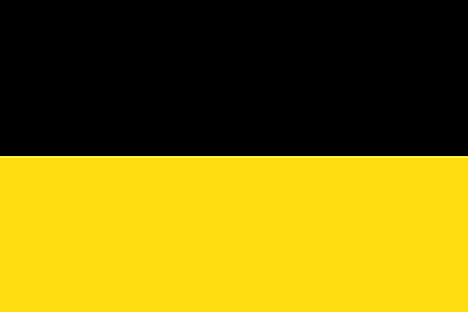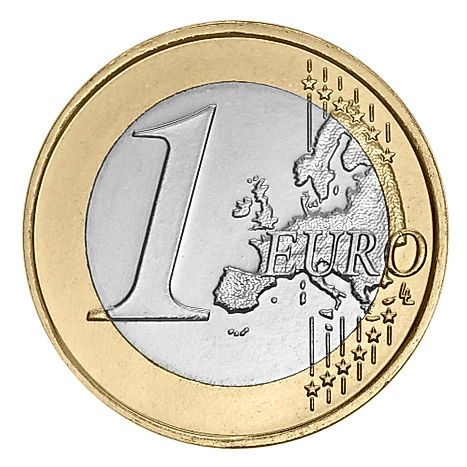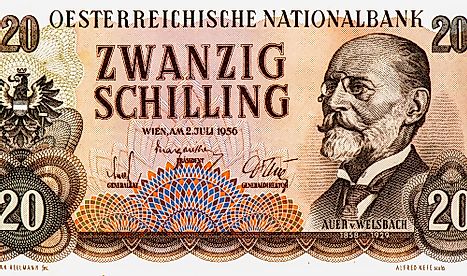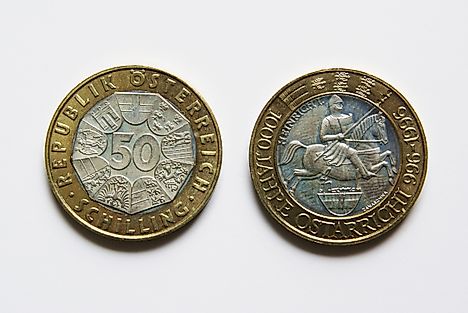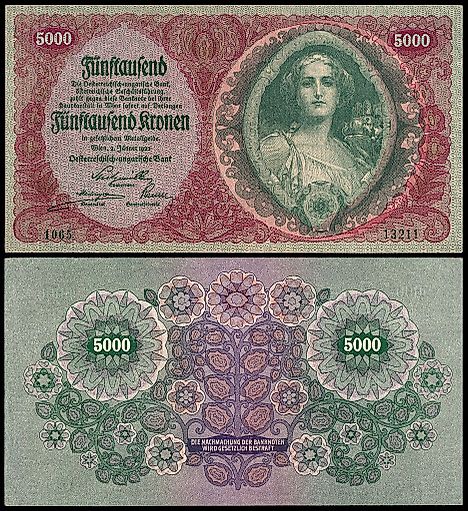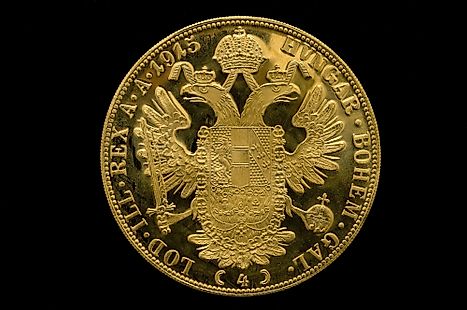Flags, Symbols & Currency of Austria
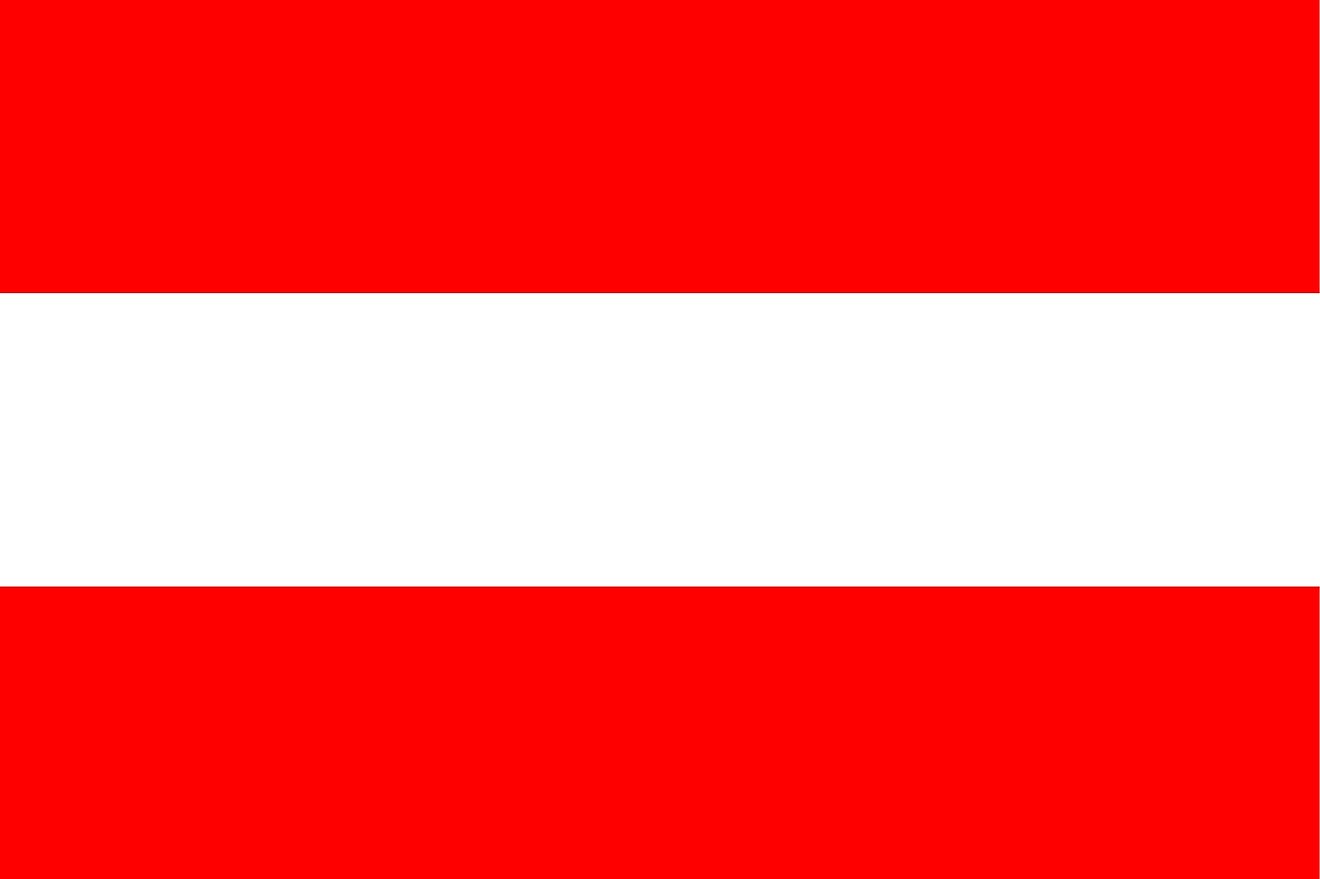
The Flag of Austria (Flagge Österreichs) is considered to be one of the oldest national symbols and comes in second after Denmark’s as the oldest national flag in the world. The design of the flag is based on the coat of arms of the Babenberg Dynasty, as recorded in the 13th century. In the 18th century, Austria adopted the flag as its naval ensign, and it became the country’s national flag on October 31, 1918. The flag was officially adopted in 1945, after being banned during World War II.
The Austrian flag is a rectangular triband flag with colors red and white. The three equal horizontal bands are arranged with red at the top and bottom with a white band in the middle. A variant of the flag that was used as the state flag, ensign and war flag has the Coat of Arms of Austria charged at the center. The red color of the flag is associated with love, open-mindedness, war, and supremacy hence signifying strength and bravery. The white color symbolizes truth and honesty. Both the national flag and the naval ensign have a height to length proportion of 2:3.
History of the Austrian Flag
The Austrian flag has its origins from the coat of arms of Babenberg Dynasty, which had a silver fess on a red field. The first documentation of the triband came in a seal on November 30, 1230. As per the claims of historian Chrysostomus Hanthaler, Duke Frederick II of Austria established a new coat of arms bearing the red-white-red color combination after he came to power in 1230. According to a long-established legend, in 1191, the Duke Leopold V of Austria invented the flag after his participation in the Siege of Acre (Third Crusade). After the fierce battle, the Duke removed his wide belt/ sash and saw that the cloth beneath the belt remained stainless, although the rest of his white surcoat had become completely blood-spattered. This red-white-red color combination amazed him, and he subsequently adopted these colors on his banner.
Symbols of Austria
National Coat of Arms of Austria
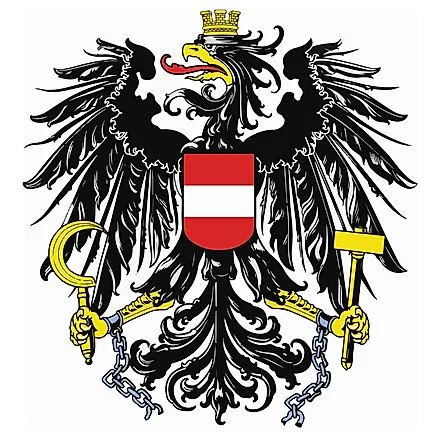
The coat of arms of the Republic of Austria was officially adopted on May 8, 1919 and were restored on May 1st, 1945 after the World War II. The coat of arms consists of a black eagle with a beak, crown, and yellow claws. The eagle has broken chains around its legs and holds a sickle and a hammer in its talons with torn handcuffs. The eagle’s chest has a red-white-red shield. The black eagle represents the old eagle from the erstwhile Austro-Hungarian Empire. The broken chains, sickle and hammer symbolizes the hard-working citizens of Austria as well as liberation of citizens, farmers and labourers from the National Socialist dictatorship. A red and white shield protects the front of the eagle, and a mural crown rests on its head. The crown stands for the country’s historical legacy while the torn cuffs signify the monarchy’s end.
National Anthem
- Anthem Title: “Land der Berge, Land am Strome” (Land of the Mountains, Land by the River)
- Music Composer: Johann B. Holzer and Wolfgang Amadeus Mozart.
- Lyricist: Paula von Preradović
- Date of Adoption: February 25, 1947
The National Anthem of Austria is “Bundeshymne der Republik Österreich” (National Anthem of the Republic of Austria). It is also known as “Land der Berge, Land am Strome” (Land of the Mountains, Land by the River). Paula von Preradović – an Austrian poet and writer had penned the lyrics while both Johann B. Holzer and Wolfgang Amadeus Mozart has been credited for composing the music. On October 22nd, 1946, the tune of Land de Berge, Land am Strome was official declared Austria's national anthem. The lyrics were confirmed and the National Anthem was officially adopted on February 25, 1947.
Initially, Sei gesegnet ohne Ende, sung to the tune of Deutschlandlied by Haydn, was the national anthem of Austria. The Third Reich used the same anthem during the war, albeit with different lyrics. Once the war was over, the original anthem was banned from being sung, and in order to steer clear of any negative associations with the Third Reich.
The National Anthem of Austria is also officially one of the symbols of the State and hence is protected by the Penal code. After numerous attempts during the 1990s and Due to the ongoing debates since mid-2005, some of the anthem's lyrics were changed to become gender-neutral on January 1st, 2012.
Land der Berge, Land am Strome (German)
Land der Berge, Land am Strome,
Land der Äcker, Land der Dome,
Land der Hämmer, zukunftsreich!
Heimat großer Töchter und Söhne,
Volk, begnadet für das Schöne,
Vielgerühmtes Österreich, Vielgerühmtes Österreich!
Heiß umfehdet, wild umstritten,
Liegst dem Erdteil du inmitten
Einem starken Herzen gleich.
Hast seit frühen Ahnentagen
Hoher Sendung Last getragen,
Vielgeprüftes Österreich, Vielgeprüftes Österreich.
Mutig in die neuen Zeiten,
Frei und gläubig sieh uns schreiten,
Arbeitsfroh und hoffnungsreich.
Einig laß in Jubelchören,
Vaterland, dir Treue schwören.
Vielgeliebtes Österreich, Vielgeliebtes Österreich.
Land of the Mountains, Land by the River
Land of mountains, land by the river,
Land of fields, land of cathedrals,
Land of hammers, with a promising future!
Home to great daughters and sons,
People highly gifted for beautiful arts,
Much-praised Austria, Much-praised Austria!
Strongly feuded for, fiercely hard-fought for,
Thou liest in the middle of the continent,
Like a strong heart,
Since the early days of the ancestors thou hast
Borne the burden of a high mission,
Much tried Austria, Much tried Austria!
Bravely towards the new ages
See us striding, free, and faithful,
Assiduous and full of hope,
Unified, let us in jolly choirs,
Pledge allegiance to thee, Fatherland
Much beloved Austria, Much beloved Austria.
The Currency of Austria is the Euro
Being a European country and a member of the Eurozone, the official currency of Austria is euro (€, EUR). Austria shares its currency with other Eurozone countries including Finland, Estonia, Slovakia, Germany, Belgium, Ireland, Malta, Holland, Latvia, Lithuania, France, Italy, Cyprus, and Greece.
Austria adopted the use of the euro on January 1, 1999, and issued the first euro coins and banknotes in 2002. Prior to the euro's existence, Austria's currency was the Austrian schilling. The Austrian National Bank played a significant role in the smooth transition to the use of the euro. The euro has an inflation rate of 2% and ranks as the second largest reserve currency after the US dollar. It is divided into 100 subunits (cents).
Coins and Banknotes
The euro comes in different denominations of coins and banknotes. The coins are made in denominations of 1, 2, 5, 10, 20 and 50 cents. Banknotes are usually available in denominations of 5, 10, 20, 50, 100, 200, and 500 euros. The euro is issued by the European Central Bank based in Frankfurt.
Commemorative Coins
The Austrian Mint issues various commemorative coins that have unique designs on the obverse side including architectural representations and famous people. Some features imprinted on these commemorative coins include the alpine gentian, St. Stephen’s Cathedral in Vienna, and Wolfgang Amadeus Mozart. Other commemorative coins mark the anniversary of various events, such as the 50th anniversary of the Austrian State Treaty (2005) and the Treaty of Rome (2007). Most of Austria's commemorative coins are minted from gold, silver, and sometimes niobium.
Historical Currencies of Austria
Austria has used several other currencies during various periods of history, mainly dependent on the political administration within the country at the time. The Austrian krone (K) served as Austria’s currency after the dissolution of the Austro-Hungarian Empire. Coins were minted from silver and gold in denominations of 20, 10, 200, and 1000. Krone banknotes were introduced in 1922 in denominations of 2, 10, 20, 100, 1000, 5000, 50,000, 100,000 and 500,000. The decline of the Austrian economy after World War I led to the decline of the Austrian krone and the introduction of the Austrian schilling (ATS). It was used between 1924 and 1938, and then again from 1954 until 2002. The gap between these two periods occurred due to the introduction of the German Reichsmark during World War II. The schilling consisted of 100 subunits called groschen. Coins were produced in denominations of 1, 2, 5, 10, and 50 groschens, while banknotes were issued in denominations of 20, 50, 100, 500, and 1000 schillings. At the time of its replacement by the euro, the exchange rate was at a fixed rate of 1 euro to 13.7603 schillings.
